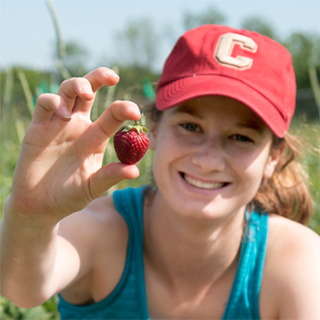
CALS Notes article by Gwen Aviles ’17, a student writer for the College of Agriculture and Life Sciences.
Marvin Pritts wants to know just what happens when the straw is taken out of strawberry growing.
Pritts, professor in the Horticulture Section of the School of Integrative Plant Science, and his team of summer interns are exploring how inputs into the soil affect the quality of the strawberries produced.
Adding straw to the field seems like it should be beneficial to growth: after all, straw provides the soil with the organic matter plants need to thrive. The practice has long been utilized in strawberry growing operations: “Growers use the straw as protection for the berries and put the straw between the rows of plants so they can be easily harvested,” Pritts explained. But he wanted to know just how this practice impacts strawberry growth.
Last season Pritts and graduate student Maria Gannett, M.S. ’16 incorporated varying levels of straw, grass clippings, and wood chips — all differing in carbon/nitrogen ratios — into different plots of soil to test how plants reacted as the amendments decomposed.
The only plots that showed negative growth were the ones with straw in their soil.


